Data plays a very crucial role in modern businesses. Both global enterprises and non-profit organizations depend on data to obtain their target in today’s world. A robust database management system is thus essential for storing, retrieving, and manipulating data. Several database systems exist for operating on different types of data, and robust data management mechanisms are also available to help with this process. Since Linux plays a significant role in the modern-day business and software ecosystem, a vast array of robust database management systems for Linux exist to help developers leverage data effectively.
Database vs. Database Management Systems(DBMS)
Often we see many people getting confused with the difference between traditional databases and database management systems(DBMS). As a matter of fact, we all have been there where it just didn’t make sense. So, we’ll try to distinguish between them below.
A database is a software that stores data. Examples include MySQL, Microsoft SQL Server, and such, whereas DBMS refers to software that allows users to retrieve these data and manipulate them as per their requirements.
The confusion arises because many DBMSs, such as MySQL, pack pre-built mechanisms for managing the data in their database. Others only offer the database, no management methods. You need to understand that a database management system is not just the database itself but rather a collection of utilities packed together with the database.
Best Database Management Systems

Since a plethora of powerful and rewarding database management systems for Linux exists, we tried our best to select the ones with the most use cases. Our editors have picked different systems for different types of databases like DBMS for relational databases, object databases, document-oriented databases, etc. Hopefully, you’ll get a good overview of the choices in general.
1. Oracle Database
Oracle is arguably the heavyweight when it comes to database management systems. The Oracle Database is a multi-model solution marketed by Oracle Corporation and is used widely around the world for its empowering capabilities. It enjoys widespread usage for transaction processing in eCommerce, data warehousing, and mixed database workloads. It is a proprietary solution but without any doubt worth the money you pay, thanks to its unrivaled feature set.

Features of Oracle Database
- It features a SQL-based relational database model and supports features like data distribution, concurrency control, client-server computing, parallel SQL execution, alongside many more.
- Oracle Database comes with exceptional data guard features such as allowing just read-only access, offloading redo transport, and managing workload across replicated databases, to say a few.
- The 18c release of this DBMS comes with in-built support for polymorphic table functions and active directory integration.
- Oracle Database supports data reduction, hybrid columnar compression, cluster file system, native sharding, and cloud service.
2. MariaDB
MariaDB is one of the best Linux database management systems to emerge in recent times. It offers a huge list of powerful yet flexible features, making it a suitable choice for developing cutting-edge web applications. It is an open source database management system developed by community members and is a fork of the popular MySQL database. MariaDB is maintained quite well and releases new features and updates very regularly.
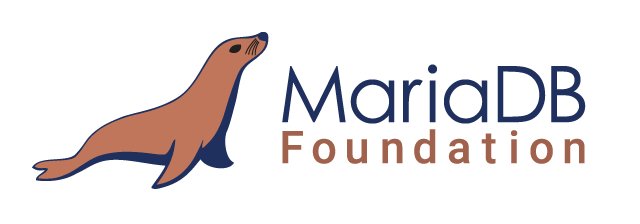
Features of MariaDB
- MariaDB is developed using a set of notable programming languages that include C, C++, Perl, and the Bash command-line shell.
- It supports up to two times faster data replication than conventional database management systems for Linux and is backward compatible with MySQL servers.
- This relational database management system uses a new powerful storage engine called Aria, which can deal with both transactional and non-transactional processes.
- MariaDB has built-in Galera cluster technology support, cross-platform support, client protocols, API compatibility with MySQL, load spreading, and many more features.
3. MySQL
MySQL is undoubtedly one of the most popular and widely used database management systems for Linux users. It has enjoyed massive success since its inception in 1995 and emerged as the de-facto open source database management system.
It has been acquired by Oracle and now provides paid functionalities for enterprises looking for high-performing, flexible, and scalable database management solutions. Notable users of this relational database management system include the US Navy, NASA, Sony, Uber, Netflix, Youtube, and Facebook.
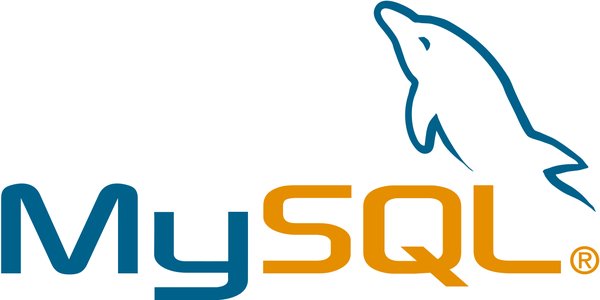
Features of MySQL
- The database management system is written in C and C++, yielding very high performance, and is compatible with Linux, BSD, macOS, Windows, Solaris, and other conventional systems.
- It uses InnoDB as the default storage engine but supports other engines, such as MyISAM, NDB, Blackhole, and Example, alongside the ability to use RAM and Archive as storage.
- MySQL stands for the M in the LAMP stack (Linux, Apache, MySQL, PHP/Perl/Python) and is the traditional choice for developing open-source web applications.
- It supports SSL, query caching, embedded databases, updatable views, True Varchar, client-server architecture, table replication, and many more modern-day functionalities.
4. MongoDB
MongoDB is one of the most famous and widely used document-oriented database management systems for Linux users. It falls under the category of NoSQL database systems. Contrary to relational databases, NoSQL databases do not use relationship-based tabular data.
Instead, they use other document schemes. MongoDB uses the JSON scheme for storing its data. It has been enjoying mainstream success since real-time web apps became prominent. In a MongoDB system, data are stored inside collections of documents.
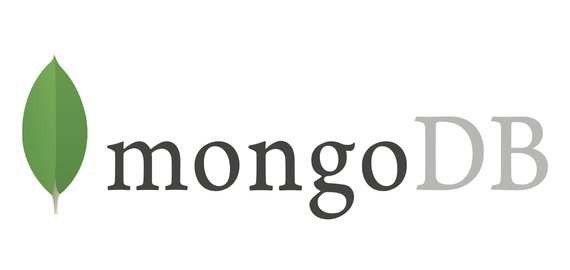
Features of MongoDB
- MongoDB offers various methods to manage the database, including a command shell, a GUI called MongoDB Compass and a management platform known as Ops manager.
- This open source database management provides the ability to deploy the database directly in the cloud through MongoDB Atlas.
- MongoDB’s flexible deployment and seamless migration abilities allow web app developers to run their applications anywhere they want.
- MongoDB integrates very well with third-party services and provides robust APIs that enable the triggering of serverless functions.
5. PostgreSQL
PostgreSQL is one of the most powerful database management systems for Linux that has a widespread application in several kinds of projects. It is an open source database management system that leverages the relational database model and heavily emphasizes extensibility, superior performance, and ease of use. PostgreSQL is used in many large-scale applications where a wide range of workloads needs to be handled due to its empowering features.
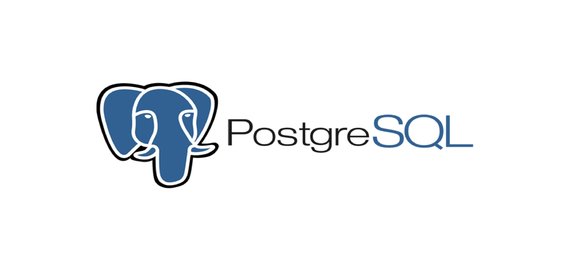
Features of PostgreSQL
- PostgreSQL allows users to define their own data types, casts, conversions, domains, indexes, operators, and procedures.
- This open source database management system has in-built support for expression indexes, partial indexes, data replication, clustering, table inheritance, and many more.
- PostgreSQL has excessive support for interfaces, including interfaces for C++, JDBC, Perl DBI, Julia, ODBC, Node.js, Tcl, and Python.
- The querying features include but are not restricted to transactions, views, sub-selects, regular expressions, SSL, TSL, two-phase commits, embedded SQL, and others.
6. Firebird
Firebird is one of the most exciting database management systems for Linux maniacs. It is an open source database management system based on the relational data model. The project was initially forked from Borland’s open source edition of InterBase back in 2000.
The last stable release came out last year and has been largely rewritten. Since then, Firebird has been enjoying massive popularity among open-source developers. According to many, it tops the most recent Linux database management systems in terms of performance and flexibility.

Features of Firebird
- Firebird comes with in-built support for stored procedures and triggers, ACID-compliant transactions, and referential integrity alongside external functions UDFs.
- It allows several methods to interface and accesses the database, including APIs, FireDAC drivers, ODBC, JDBC, PHP, Perl, and Python module.
- Firebird sits on top of a multi-generation architecture and supports multiple users to access and work on the database simultaneously.
- Firebird supports cross-database queries and facilitates the development of hybrid OLAP and OLTP applications.
7. CUBRID
CUBRID is another SQL-based relational database management system for Linux that can develop next-generation software and web apps. It comes with robust object extensions and is entirely open source. CUBRID is one of the new Linux database management systems to gain popularity. It is a high-performing system that scales well and provides modern-day security to maintain data integrity. It comes with separate licenses for its server and interfaces.
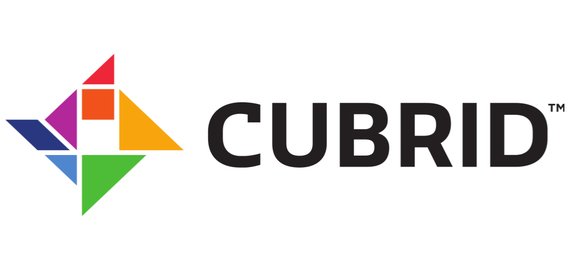
Features of CUBRID
- CUBRID is built using a 3-tier client-server architecture that consists of the database server, the application layer, and a connection broker.
- It provides a highly fault-tolerant, load-balanced, and continuous service through its shared-nothing clustering, fail-over, and fail-back automated procedures.
- CUBRID comes with built-in support for database sharding which can be implemented by the exclusive CUBRID SHARD Broker.
- CUBRID supports both single-column and multi-column B+-tree indexes, table partitioning, hierarchical queries, regular expressions, and a diverse range of data types.
8. SQLite
SQLite is arguably one of the most innovative and empowering database management systems for Linux. It is based on SQL and takes a relational data management approach. SQLite is different from conventional Linux database management systems because it does not follow the traditional client-server database engine. Instead, this open-source database management system is directly embedded into the final program. Thus, it is a popular choice for developers who want to pack the database right into the software.
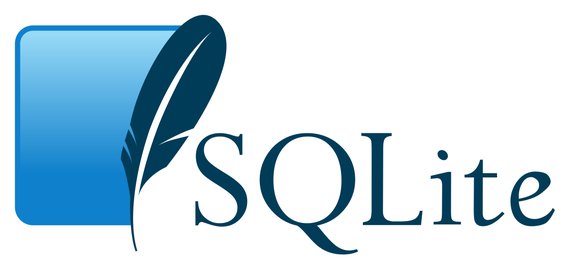
Features of SQLite
- SQLite is exceptionally lightweight, measuring at 699 KiB, and thus can be loaded directly with software without adding redundancy.
- It stores the entire database, including tables, indices, and data, as a single file on the host machine and does not require any service management.
- It features interfaces for almost every major programming language, including but not limited to C, C++, Java, Perl, Python, PHP, Rust, R, Lisp, JavaScript, and Lua.
- SQLite is very reliable for software development, and the maintainers regularly roll out new features and bug fixes to keep it updated.
9. Apache Derby
Apache Derby is a Java-based open source database management system for Linux. It aims to provide an easy-to-install and use database management system that can be used for developing modern-day applications at relative ease. The base system is very lightweight, weighing only about 3.5 Mb. Apache Derby is an excellent choice for Java programmers as it can be embedded into Java programs very quickly.
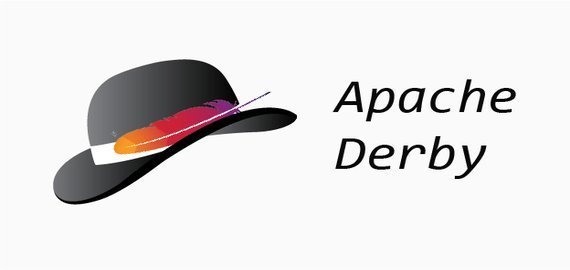
Features of Apache Derby
- Apache Derby supports the traditional client-server architecture with the Derby Network Client JDBC driver and Derby Network Server.
- The SQL syntax followed by Apache Derby is similar to that of IBM DB2 SQL syntax.
- It allows clients to connect to the network using the standard DRDA protocol over TCP/IP internet protocol.
- Apache Derby comes with robust utilities which allow functionalities like SQL script execution, schema extraction, and display classpath, among others.
10. Amazon RDS
Amazon Relational Database Service is a distributed relational database service that directly provides robust database management abilities from the cloud. It is offered by Amazon Web Services and is designed to be easy to install, operate, and scale relational databases for next-generation applications. If you’re looking for Linux database management systems that make it for you to control network access to your database, Amazon RDS is an excellent solution for you.
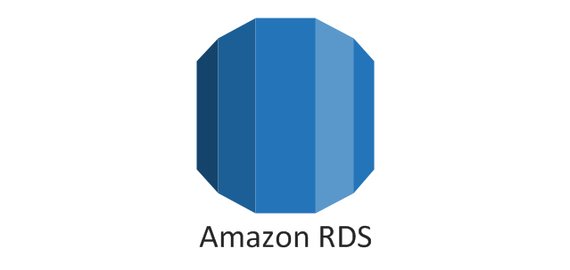
Features of Amazon RDS
- Amazon RDS-supported database engines include Amazon Aurora, PostgreSQL, MySQL, MariaDB, Oracle, and Microsoft SQL Server.
- It allows two SSD-backed storage options optimized heavily for providing excessively fast speed and cost-effective general-purpose usability.
- Amazon RDS lets developers run their database instances directly from Amazon Virtual Private Cloud (Amazon VPC), thus isolating the database system from IT infrastructures.
- Amazon RDS provides easy administration features for your databases, such as the RDS management console, RDS command line, and a robust set of APIs.
11. Redis
Redis is a robust, in-memory, and open source database management system for storing key-value pairs. It is usually used in caching and has been widely popular due to its lightning-fast speed. Contrary to traditional Linux database management systems, Redis doesn’t save HDD data. It stores the key-value pairings in the RAM. Since accessing RAM is much faster than accessing HDD or SSD, Redis is among the fastest database management systems for caching.
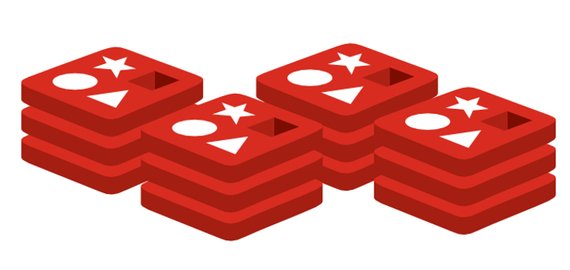
Features of Redis
- Apart from the flexible desktop GUI, Redis has interface support for C, C++, Erlang, Haskell, Java, Perl, PHP, Python, R, and Ruby.
- Redis-supported data types include string lists, sets of sorted or unsorted elements, hash tables, HyperLogLogs, Streams of entries, and Geospatial data.
- Redis employs two persistent mechanisms, RDB snapshotting and AOF snapshotting, to prevent data loss during system shutdown or failure.
- Redis can be used in projects where high speed is a priority, like chat services, session stores, media streamings, machine learning, real-time analytics, etc.
12. HSQLDB
HSQLDB stands for Hyper Structured Query Language Database and is one of the most lightweight database management systems for Linux outside SQLite and Apache Derby. It is powered by Java and is usually used in software developments where embedded databases are required for handling data like LibreOffice. HSQLDB comes with support for a broad set of SQL standards and provides both in-memory and disk-based tables.
Features of HSQLDB
- The interface options for HSQLDB include a GUI management tool, a command-line interface, and JDBC.
- HSQLDB comes with in-built support for multithreading, partial execution, and MVCC(multi-version concurrency control) transaction control models.
- This is an open source database management system and can be extended very quickly, thanks to its proper documentation.
- HSQLDB is ACID-compliant, supports LOBs, transaction isolation, and servers, and can be deployed as Java applets.
13. Ingres
Ingres is a prominent database management system with widespread commercial usage. Originating at the University of California, Berkeley, Ingres was sponsored by the U.S. defense agency and the National Science Foundation. It comes with an open-source license and offers a massive list of robust features that make it suitable for developing community and proprietary software solutions.
Features of Ingres
- Ingres uses the C programming language and supports the AIX, HP Open VMS, Solaris, and Windows platforms alongside Linux.
- It has built-in interface support for .NET Client API, ODBC, JDBC, and OpenAPI for proprietary usage.
- Ingres allows server-side scripts and supports triggers, horizontal partitioning, immediate consistency, concurrency, and foreign keys.
- It is ACID-compliant and utilizes the Ingres Replicator for data replication processes.
14. Hadoop HDFS
The Hadoop Distributed File System (HDFS) is one of the most widely used database management systems for Linux users to deal exclusively in the field of machine learning. It allows data science professionals to store a massive amount of data in a distributed manner across nodes on a particular network. It is designed to be extraordinarily fault-tolerant and follows the master-slave architecture.
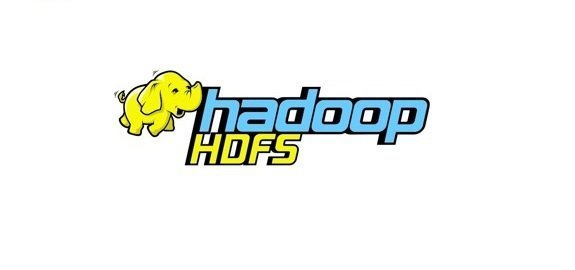
Features of Hadoop HDFS
- HDFS breaks the data it takes into various blocks and distributes them to several nodes in a cluster to enable efficient parallel processing.
- This open source database management system replicates each piece of data. It distributes at least a copy of them to other nodes to ensure data safety in case of system failure.
- Hadoop HDFS is used by global giants such as Yahoo, Facebook, eBay, LinkedIn, and Twitter to handle their big data analytics processes.
- HDFS plays a particularly important function in batch data processing due to its high data throughput rates.
15. IBM Db2
The IBM Db2 is a family of data management products from IBM, including database servers alongside others. It mainly supports the relational data model but has curated some non-relational structures like JSON and XML to stay on track with the shift towards document-oriented databases in recent times. It is a paid solution and runs on every major system, such as Windows, Linux, and other Unix-like systems.
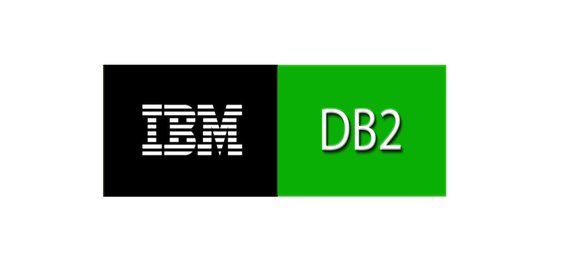
Features of IBM Db2
- The Db2 AI database vision supports confidence-based SQL query results by leveraging machine learning principles.
- It incorporates a common SQL engine that allows users to write queries once and run them anywhere.
- IBM pureScale allows large businesses to scale their process very efficiently.
- Db2 provides advanced storage optimization features such as in-memory columnar technology, parallel vector processing, data skipping, and data compression.
Ending Thoughts
Thanks to its widespread popularity in software development, Linux offers some of the best open source database management systems. You can also find industry-grade, paid database management systems for Linux. Our editors have picked the best from both categories and laid out this guide to help you choose the appropriate solution for you.
Some of the best Linux database management systems for enterprise software include Oracle, MySQL, PostgreSQL, SQLite, and MongoDB. Whereas systems like Redis and HDFS will come in handy when developing specialized applications. Hopefully, we provided you with the necessary insights required for your selection. Stay with us for more guides on top Linux software.
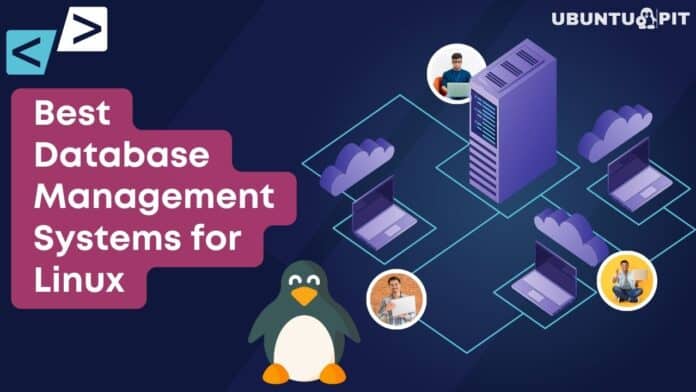
The part “Database vs. Database Management Systems(DBMS)” is confusing (IOW: wrong), even calling MySQL a database in one paragraph and a DBMS in the next.
The distinction is very simple in my opinion:
– A database is the structure to administer the data (i.e. mainly the database tables) plus the data itself.
– A DBMS is the software that lets you work with the database(s).
MySQL for instance is a DBMS. It lets you create one or more databases, be it something small like a mere table of books, or something big like a company’s products, stores, suppliers, clients and what more.
Darn. I was going to use PostgreSQL, but I’m sorry to hear it has excessive support for interfaces. There has to be a balance, you know? I’m looking for something with support that’s a little less *extensive*.
You missed Progress Software database.